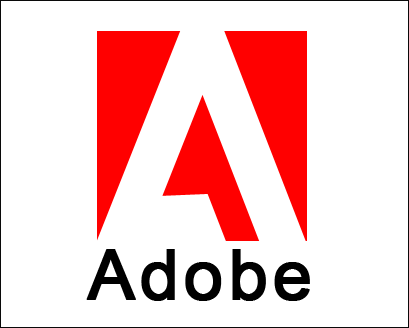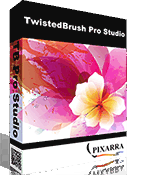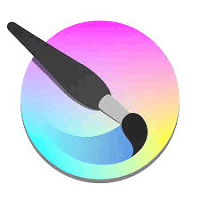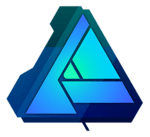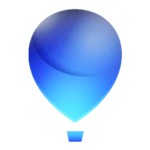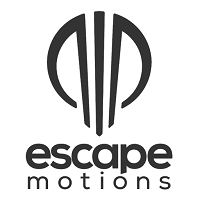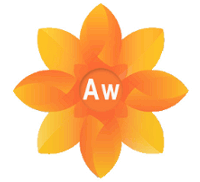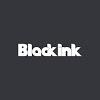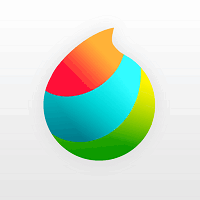What Is Digital Art Software?
Computer programs or apps created especially for producing and modifying digital artwork are referred to as digital art software. It enables artists to work digitally, producing beautiful and distinctive images with a range of tools and approaches. The adaptability of digital art software is one of its main advantages. Without the constraints of traditional media, it gives artists a wide range of creative options and lets them try out various styles and techniques.
For both novice and seasoned painters, this makes it the perfect option. Artists can experiment with a variety of media, including painting, sketching, illustration, graphic design, and even 3D modeling, using digital art tools. With a range of tools and functions that resemble conventional art supplies, these apps allow artists to freely express their creativity in a way that is both familiar and intuitive.
The capacity of digital art software to undo and redo activities gives artists the freedom to make adjustments without worrying about damaging their work. Beginners especially benefit from this feature since it lets them try new things and learn without worrying about making mistakes. Additionally, a variety of customized hotkeys and shortcuts are available in digital art software, which speeds up and improves the creative process.
Professional artists who have strict deadlines or who just wish to optimize their process may find this very helpful. The ability to work in layers is one of the biggest benefits of digital art software. This feature makes it simpler for artists to make changes and revisions by enabling them to create and edit distinct elements of their artwork independently.
Additionally, it allows them the freedom to enhance the piece's overall appearance by adding depth and complexity. Compatibility with your computer or tablet, the availability of required tools and capabilities, and the degree of technical assistance offered by the program creator are all important considerations when buying digital art software.
Making an informed choice can also be aided by reading customer reviews and attempting free trials. In conclusion, artists have a plethora of options for creating and expressing themselves digitally thanks to digital art software. It is a useful tool for artists of all skill levels due to its adaptability, flexibility, and simplicity of usage. You can pick the ideal digital art software to further your artistic journey by being aware of your needs and taking into account the important variables.
What Are The Recent Trends In Digital Art Software?
Every year, new trends emerge in the ever-evolving and improving field of digital art software. To make an informed choice about which software to purchase, it's critical for prospective buyers to keep abreast of current trends. To assist you in selecting the best digital art software for your creative requirements, we will go over current trends in this buyer's guide.
1. Augmented Reality (AR) Integration: In recent years, AR technology has become more and more popular, and it is now starting to appear in digital art applications. Artists may make their works come to life and engage with them more fully through the integration of augmented reality.
2. Cloud-Based Solutions: As cloud-based solutions gain traction, an increasing number of digital art software suppliers are providing this choice. This enables artists to collaborate with others and view their work on any device, from any location.
3. Artificial Intelligence (AI): AI is transforming digital art in addition to other industries. To improve the creative process, numerous software companies are integrating AI technologies like predictive drawing, intelligent brush technology, and auto-coloring.
4. Mobile Compatibility: The need for digital art software that works with mobile devices is growing along with their use. Nowadays, a lot of software companies offer mobile versions of their products, which makes it simpler for artists to work while on the road.
5. Subscription Models: A lot of software suppliers now give subscription-based models in addition to one-time payment options. This eliminates the need for an expensive upfront payment and gives artists access to the newest features and updates.
6. Social Media Integration: As social media has grown in popularity, a lot of digital art software companies now include built-in tools that make it simple to share and advertise your work across several channels, thereby increasing an artist's audience and reach.
7. Support For Virtual Reality (VR): As VR technology gains traction, some software companies that offer digital art are integrating it into their offerings. This improves artists' creative powers by enabling them to work in a completely immersive 3D environment. You may choose the application that best meets your creative demands by keeping an eye on the latest developments in digital art software. Choose software that meets your needs by thinking about the features that are most essential to you. It's fascinating to observe what new trends will appear in the upcoming years given how rapidly the field of digital art is developing.
Benefits Of Using Digital Art Software
As technology has advanced and digital devices have become more widely used, digital art software has grown in popularity in recent years. This program is a vital resource for anyone interested in producing digital art because it offers a multitude of advantages to artists and creatives.
1. Unlimited Creativity: The boundless creative possibilities that digital art software provides are among its greatest advantages. Artists can produce sophisticated and one-of-a-kind digital artwork that would be practically impossible to accomplish with traditional art materials thanks to a variety of tools and capabilities. By enabling experimentation and investigation, this software pushes the limits of conventional art and opens up new avenues for creativity.
2. Ease Of Use: Professionals and novices alike can utilize digital art software because it is made to be user-friendly. Compared to traditional art mediums, software typically has a considerably shorter learning curve and includes tutorials and directions to help users get started. Without the trouble of materials and equipment, artists can create excellent digital art with a few clicks and tweaks.
3. Versatility: The adaptability of digital art software is yet another important benefit. From conventional painting and drawing to 3D modeling and animation, it enables artists to work in a variety of genres and media. In addition to giving artists a variety of choices, this adaptability allows them to experiment with new methods and advance their abilities.
4. Time And Cost-Efficient: By removing the need for materials and supplies, digital art software helps artists save time and money. Without having to worry about expenses for supplies like paper, canvas, paint, or brushes, artists may work on their digital works. Digital software also makes it possible to make quick edits, fix errors, and save and store many copies of artwork, all of which increase productivity while saving time.
5. Simple Editing: Digital art makes editing and corrections simple, in contrast to conventional art, where faults can be difficult to correct. Artists can alter colors, proportions, add new layers, and even undo or redo certain parts of their work using computer tools. This tool gives artists greater creative power, which results in better and more polished artwork.
6. Accessibility: Artists can create and view their work from any location with an internet connection by using digital art software. Working on projects while on the go, sharing artwork with a larger audience, and collaborating with others are all made simple by this tool. It is a practical choice for artists with limited space because it also does away with the necessity for a dedicated desk.
Important Factors To Consider While Purchasing Digital Art Software?
Finding the ideal alternative for your needs requires taking into account a number of crucial variables when buying digital art software. In my capacity as a professional content writer, I have done extensive research and put together a thorough list of important considerations for buyers.
1. Features And Tools: The software's feature and tool set is the first and most important consideration. It is crucial that the program offers the features and capabilities required to satisfy your unique creative needs. Vector tools, layers, filters, and brush customisation are a few typical things to search for.
2. Compatibility: The software's ability to work with the operating system on your computer is another important consideration. While some software may have versions for both Mac and Windows, some may only work with one of these operating systems. To prevent any compatibility problems, it is crucial to make sure the program you select is compatible with your system.
3. User Interface: The software's user interface has a big impact on how effectively you can utilize it. Selecting software with an intuitive and user-friendly interface is crucial because a cluttered and complex interface might impede your workflow. A lot of digital art software comes with a free trial so you may try out the user interface before buying.
4. Learning Curve: The software's learning curve is a crucial factor to take into account, regardless of your level of experience. For novices, the higher learning curve of some products could be too much to handle. To prevent frustration, it's critical to select software that corresponds with your degree of experience.
5. Cost: The price range for digital art software is free to several hundred dollars. It's critical to keep your spending limit in mind and select software that provides the functionality you require without going over budget. When choosing a choice, it's also important to take future expenses and update availability into account.
6. Customer Assistance: Having access to trustworthy customer assistance is essential in the event that you encounter any technical difficulties or have inquiries concerning the product. To make sure you have help when you need it, look for software that provides a variety of customer care channels, including phone, email, and live chat.
7. Reviews And Ratings: Researching and reading user reviews and ratings is usually a smart idea before making a purchase. This can help you better understand how well the product works and how satisfied users are. You can choose wisely when buying digital art software by taking these things into account. To pick the ideal program for your artistic activities, keep in mind your unique wants and requirements.
What Are The Key Features To Look For In Digital Art Software?
It can be very difficult to sort through the many possibilities on the market when it comes to buying digital art software. Before making your purchase, there are a few important aspects to take into account, ranging from professional-level suites to beginner-friendly programs. The following are some crucial characteristics of digital art software that will enable you to produce breathtaking artwork:
1. User Interface: The software's user interface should be one of your first considerations. Regardless of your level of experience, it should be simple to use and intuitive. Seek for layouts and tools that are adaptable to your particular requirements so you may design a workspace that suits your productivity.
2. Compatibility: It's important to be sure the program you select works with the hardware and computer system you own. While certain programs may need precise hardware specifications to function properly, others are only compatible with particular operating systems. Before making a purchase, be sure to review the system requirements.
3. Drawing And Painting Tools: The drawing and painting tools are the core of every digital art program. Choose a program that provides a large selection of pens, brushes, and other tools that resemble conventional art mediums. Your ability to produce original and engaging artwork will increase with the tools' versatility and realism.
4. Layer Management: To create intricate and detailed digital art, layers are necessary. Strong layer management features in a decent program should make it easy for you to arrange and work with your layers. Look for capabilities like the ability to group and merge layers, blending modes, and opacity settings.
5. File Formats: A range of file formats for import and export should be supported by the best digital art software. This will enable you to share your artwork with others without encountering compatibility problems and work with various file kinds with ease.
6. Creative Features: Some applications provide sophisticated features for expert artists, while others provide simple tools for novices. Which software provides the best creative tools for your requirements will depend on your skill level and the kind of art you wish to make. It's also worthwhile to search for any additional features or effects that can give your artwork a distinctive touch, such 3D rendering.
7. Customer Help: Just like with any software, having dependable customer help is crucial in case you run into problems or have inquiries. Seek out programs that include a variety of help channels, including phone, email, and live chat. Additionally, look for any extra costs associated with customer service.
Why Do Businesses Need Digital Art Software?
Businesses of all kinds are discovering the value of building a strong online presence as the world shifts to a more digitally-driven economy. Visual material is essential for drawing clients and successfully communicating brand messaging in this cutthroat industry. Software for digital art enters the picture at this point. Digital art software is a potent instrument that enables companies to efficiently and smoothly produce, modify, and distribute visual content.
Digital art software provides a vast array of features and tools to make ideas come to life, whether you're making captivating visuals for social media, developing a polished brand, or creating illustrations of superior quality. In order to interact with their target audience, businesses are expected to continuously create visually appealing content as social media and e-commerce grow in popularity.
In addition to assisting with the creation of visually appealing content, digital art software ultimately saves time and money.Businesses may produce designs that seem professional without paying a graphic designer because to features like templates, configurable fonts, and integrated design components. Additionally, team members can collaborate more efficiently thanks to digital art software, which facilitates remote project work. This is particularly helpful for companies with remote or international workers because it guarantees that everyone is in agreement and can participate in the design process from anywhere.
Additionally, companies may guarantee consistent branding throughout all of their visual content by investing in high-quality digital art tools. Credibility and brand recognition depend on this. Customers can develop a strong and identifiable brand image by applying the same design elements across all platforms and customizing designs in accordance with brand requirements.
How Much Time Is Required To Implement Digital Art Software?
A number of variables, including the software's complexity, the user's degree of experience and familiarity with digital art tools, and the particular features and functions being used, can affect how long it takes to install digital art software. However, most digital art applications can be set up and used in a matter of minutes thanks to technological breakthroughs and user-friendly interfaces.
It could take some time for people who are new to digital art or beginners to become used to the new software and its features. To completely grasp the software's potential, it is advised to invest a few hours in investigating its many aspects and trying out various methods. To assist users in getting started quickly and effectively, some software also provides tutorials and guidelines.
The amount of time needed to install digital art software for more experienced users or professionals may vary depending on the degree of customizing and modification necessary. To meet their unique requirements and tastes, this can entail importing custom brushes or designing unique workstation arrangements. Once established, these tasks can significantly improve the user's digital art workflow's productivity and efficiency, even though they could require more time.
What Is The Level Of Customization Available In Digital Art Software?
Every artist has a distinct style and vision when it comes to digital art. For this reason, having highly customizable digital art software is essential. This guarantees that the finished result accurately reflects the artist's individual style while also enabling them to freely express their ideas. However, what does the term "customization" in digital art software actually mean? In essence, it means that you can customize the application to fit your own requirements and tastes.
This can include more complex capabilities like making custom brushes and tool presets, as well as more fundamental ones like the color scheme and brush settings. The user interface is a crucial component to take into account when assessing the degree of customisation in software. While a cluttered or complex interface might impede the creative process, an intuitive and user-friendly interface facilitates access to and customization of a variety of features.
The variety of tools and customization choices offered is another crucial feature to consider. While some software may only offer a small choices, others give artists more control over their artwork by offering a large range of alternatives for every feature. Additionally, layer customisation should be possible with a good digital art program.
This involves creating and managing many layers, as well as modifying blending modes, opacity, and layer settings. Finally, some software allows for modification by utilizing add-ons and plug-ins. These can expand the program's functionality and provide artists even more choices to customize their digital art experience.
Which Industries Can Benefit The Most From Digital Art Software?
In today's technologically advanced and fast-paced world, digital art software has become a vital tool. It makes it simple for designers, artists, and other creative professionals to let their creativity run wild and produce breathtaking visual masterpieces. Digital art software, however, has proven to be a useful tool for a number of businesses outside of the realm of art and design. We will examine which industries stand to gain the most from the use of digital art software in this buyer's guide.
1. Advertising And Marketing Sector: To draw in their target audience, the advertising and marketing sector mostly depends on visual attractiveness. Graphic designers may produce visually striking ads, social media postings, and other promotional materials using digital art software. Additionally, it enables rapid revisions and modifications, which facilitates meeting customer requests and strict deadlines.
2. Film And Animation Sector: Digital art software has transformed the film and animation sector by giving animators and directors a strong platform to realize their creative visions. For making amazing visual effects, 3D models, and animations for movies, TV series, and advertisements, the program provides a plethora of tools and functions.
3. Gaming Business: Digital art software is a vital tool for game producers because the gaming business depends on immersive and appealing images. Digital art software offers the capabilities required to realize game concepts, from character design to the creation of complex game landscapes.
4. Fashion And Textile Industry: Digital art software can also help fashion designers and textile artists. It does away with the need for expensive and time-consuming physical prototypes by enabling the rapid and effective generation of digital sketches and patterns. This allows for greater experimentation and innovation in the design process in addition to saving time and money.
5. Architecture And Interior Design Sector: In architecture and interior design projects, atmosphere and scenery are essential. Architects and interior designers can precisely picture the finished project by using digital art software to produce realistic 3D renderings of their concepts. This expedites the design process and lowers the likelihood of expensive errors.
6. Education Sector: Digital art software has also made its way into the educational sector, giving students practical experience in a range of subjects like digital art, animation, and graphic design. It enables students to hone their abilities, try out various methods, and get ready for their future employment.
Conclusion
To sum up, selecting the appropriate digital art software can significantly improve your creative process and assist in realizing your concepts. As we've covered, there are a number of crucial aspects to take into account while choosing. Start by evaluating your unique needs and artistic objectives. Are you an amateur or an expert? Do you have a particular medium or style in mind? These elements will assist you in identifying the tools and features that are most crucial to you.
After that, investigate the many software choices that are available and contrast their features, costs, and user feedback. Before making a purchase, it's also beneficial to try out free samples or demonstrations to get a sense of each program's features and interface. Think about how well it works with your operating system and any other devices or gear you might require.
Additionally, consider the possibility of future software updates and expansion. Finally, keep in mind that customer service and user-friendliness should come first. Your creativity and productivity may be hampered by a complicated or challenging application, and running into problems without dependable assistance can be irritating. All things considered, you may choose the best digital art software that complements your artistic style and advances your creative journey with confidence if you carefully evaluate your unique needs and completely investigate your possibilities.



